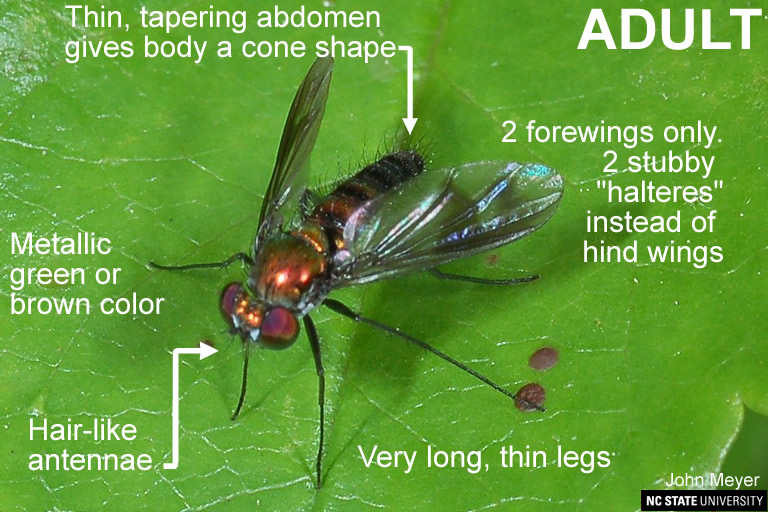Dolichopodid Fly
go.ncsu.edu/readext?563176
en Español / em Português
El inglés es el idioma de control de esta página. En la medida en que haya algún conflicto entre la traducción al inglés y la traducción, el inglés prevalece.
Al hacer clic en el enlace de traducción se activa un servicio de traducción gratuito para convertir la página al español. Al igual que con cualquier traducción por Internet, la conversión no es sensible al contexto y puede que no traduzca el texto en su significado original. NC State Extension no garantiza la exactitud del texto traducido. Por favor, tenga en cuenta que algunas aplicaciones y/o servicios pueden no funcionar como se espera cuando se traducen.
Português
Inglês é o idioma de controle desta página. Na medida que haja algum conflito entre o texto original em Inglês e a tradução, o Inglês prevalece.
Ao clicar no link de tradução, um serviço gratuito de tradução será ativado para converter a página para o Português. Como em qualquer tradução pela internet, a conversão não é sensivel ao contexto e pode não ocorrer a tradução para o significado orginal. O serviço de Extensão da Carolina do Norte (NC State Extension) não garante a exatidão do texto traduzido. Por favor, observe que algumas funções ou serviços podem não funcionar como esperado após a tradução.
English
English is the controlling language of this page. To the extent there is any conflict between the English text and the translation, English controls.
Clicking on the translation link activates a free translation service to convert the page to Spanish. As with any Internet translation, the conversion is not context-sensitive and may not translate the text to its original meaning. NC State Extension does not guarantee the accuracy of the translated text. Please note that some applications and/or services may not function as expected when translated.
Collapse ▲- Common Name: Dolichopodid Flies
- General Category: Beneficial Predator
- Taxonomic Classification: Diptera: Dolichopodidae
- Scientific Name: Many species
Description
These very attractive long-legged flies are often seen on foliage in crops and gardens either resting in sunlight, or running and flying quickly between leaves. Adults are predaceous on small insects such as aphids. Larvae are assumed to be predacious, but little is known about most species.


Identification
Review the images for tips on how to identify these predators.
Adults
Small (3-4 mm), slender flies with very long, thin legs and thin tapering abdomens. Color a metallic blue, red or green. Wings held at 45 degree angle from body.
Larvae
Very little is known of the life history of dolichopodid larvae, but they appear to be soil-inhabiting in areas other than crops fields, such as wet drainage areas and ditch banks.
Value in Pest Management
Adults can be very abundant in some crops, especially from mid-season to harvest. Although little is known and they are not known to be important predators of specific crop pests, they are included here because of their abundance in the field. They are not sold commercially.
Origin and Distribution
Native, throughout eastern North America.
Discover Life – Dolichopodidae


